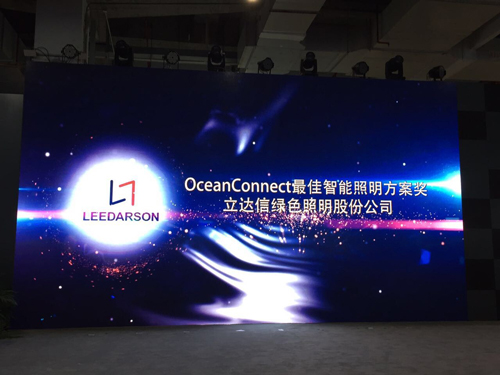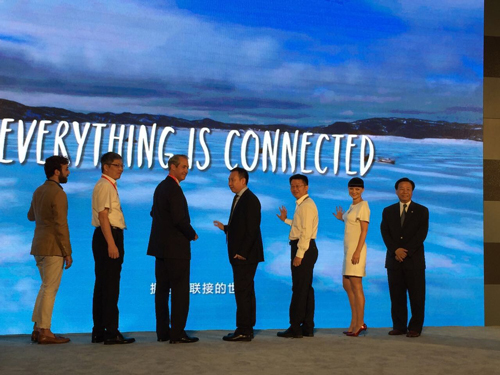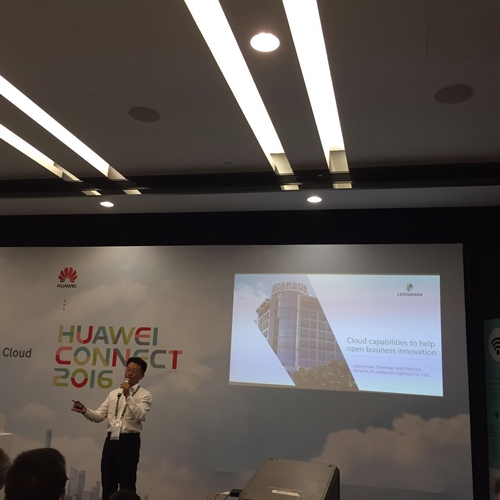In the process of trying to open the door to the smart lighting market, Internet giants, traditional home appliance manufacturers and traditional lighting giants have adopted different ways and postures, respectively, because their respective resources and advantages are not the same. This time, Huawei once again brought the smart lighting back to the stage. On August 31, Huawei's largest global ecological conference for the ICT industry, HUAWEI CONNECT 2016, opened in Shanghai for three days. At the conference, Huawei first comprehensively expounded Huawei's strategic positioning. In the first speech of the conference, Huawei’s rotating CEO Hu Houkun said that Huawei’s positioning is to become an enabler and promoter of the intelligent society. After the release of Huawei HiLink Smart Home Strategy at the end of 2015, Huawei officially announced the establishment of HiLink Smart Home Ecology for 8 months, and revealed that the first batch of Huawei HiLink eco-partner products will be launched on September 30, involving air quality, light management and energy. Manage three categories. Among them, LED intelligent lighting is one of the key products. On the same day, Huawei and Lidaxin signed a comprehensive strategic cooperation agreement. The two parties will make full use of their respective industry advantages to conduct cross-border cooperation and jointly create a more competitive market for smart home. Huawei said that the HiLink protocol is known as "Mandarin" between smart devices and is a standard protocol between devices, between devices and mobile phones, between devices and the cloud, between devices and networks. Interconnection between various intelligent terminals. The strength of the giant lies in the ability of big data and cloud services. The motivation is to obtain user data, and it is not easy or necessary to directly engage in hardware manufacturing. On the same day, another LED lighting company, Op Lighting, released a joint development with Huawei to “Oupu HUAWE HiLink Smart Lighting Productsâ€. One is the illusion HUAWEI HiLink version that can be used for the main lighting of the bedroom restaurant, and the other is the HUAWEI HiLink version for the home-assisted lighting. Huawei hopes that after completing the basic construction in 2016, HiLink Smart Home will reach 50 core partners in 2017 and 100 in 2018. In fact, in the past few years, giants such as Xiaomi, Ali, and Jingdong have all sent their willingness to strategic cooperation to the LED lighting industry, but the results have been minimal. In February 2015, Xiaomi signed a joint statement with 13 lighting companies to announce the joint promotion of the smart lighting industry. These 13 companies include Yaming, Sunshine, Hongyan, Op, Philips, Mulinsen, Corey, Ruigao, Yinghui, Bainian, Dinghui, Dunge and so on. These companies will use Xiaomi's smart home wireless modules in their smart light bulbs. After modification, these devices will support the interconnection of hardware products such as Xiaomi mobile phones to build intelligent lighting systems. In March, Ali smart cloud smart lighting strategic cooperation, Ali wants to rely on its cloud services and the innate advantages of big data (Alibaba Cloud), based on the smart home to the high point, and the formation of Ali's smart home ecosystem as an Internet leader. They will provide technical and service support to lighting companies. Recently, Philips Lighting released its lighting strategic plan in Beijing, clarifying that the next major development direction is in smart interconnection, which has caused heated discussion in the industry. Some insiders questioned that many of Philips' marketing methods are strategic, and the input and output are not proportional. The imitation is to burn money. Just like the retail channel model, how many domestic enterprises are igniting the fire, "concentrated operation" is the imitation of domestic enterprises. The fission "noun" of the Philips lighting retail channel. So when Philips publicly demonstrated its smart connected LED lighting system and products in the Internet of Things era in China, it is worth reminding that Philips is worth learning, but it must be correct, objective, and be yourself. It is important to make products and sales models that suit you. But, is this the truth? Perhaps, as a traditional lighting giant, it is extremely risky to rely on one's own efforts in the field of intelligent lighting. However, the market signal it conveys is a concern for the current development stage of LED lighting. Guan Yong, general manager of Sunshine Lighting, said that the traditional concept of lighting control did not just need to be experienced. If it was just a switch to light energy-saving control, it could not achieve the second round of LED growth. He said that for the old-fashioned companies such as Philips, Osram, GE Lighting, Ops and Sunshine, and the cross-border linkages between Google, Apple, Cisco, Qualcomm, Huawei, and ZTE, they are full of expectations, because this is extremely There may be opportunities for innovation. The relevant person in charge of Lidaxin said that the strategic cooperation with Huawei mainly focused on intelligent hardware such as intelligent lighting and smart sensors relying on Huawei platform. Huawei provides advanced cloud computing solutions and core control devices for smart home systems. . With strong platform support, Rieter can fully utilize the R&D and manufacturing capabilities of intelligent hardware and provide a wide range of high-quality products to help Huawei build a more complete smart home ecosystem. In the past few years, LED smart lighting has shouted a lot, but it has not formed a real and sustainable market demand growth. According to related sources of Rieter, “With the continuous marketing, many large customers are now importing smart lighting products.†"From the perspective of the entire lighting industry, the market penetration rate of smart lighting is still very low. However, from the perspective of Rieter, the market penetration rate of smart lighting has exceeded 5%." The era of the Internet of Things is destined to move toward the trend of “the big ones are big, the strong ones are strong and strongâ€, and the combination of strength and strength is an inevitable choice for sustainable development of enterprises. In the future, a simple application that truly solves a problem is what a consumer needs. “From lighting to smart lighting, LED gives us a good opportunity. In fact, we not only do smart lighting, but also do sensors.†The above person added, because for LEDs, only one lighting is not enough. Need to be truly combined with many sensors to achieve more automated, intelligent applications. For the future results, Rieter's relevant people are full of confidence. "It is foreseeable that through the strategic sharing of resources and complementary advantages, the two sides will explore a new direction of cross-border integration of traditional industries and the interconnected communications industry, with important industry indicators." Guangzhou Ehang Electronic Co., Ltd. , https://www.ehangmobile.com


